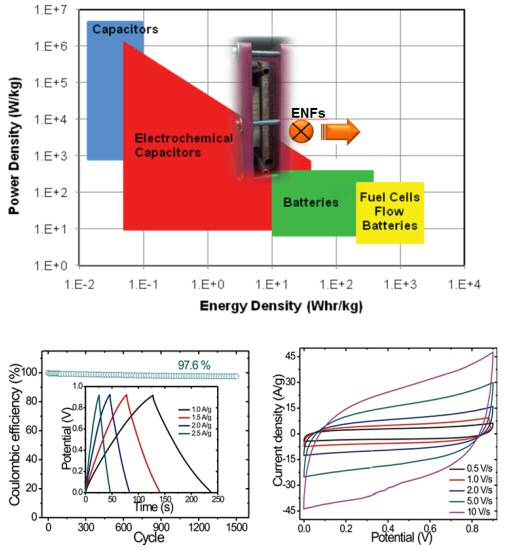High performance flow supercapacitor Energy storage is in the midst of a revolutionary change which will turn it into a key factor within the upcoming sustainable energy model. Among Electrochemical Energy Storage Systems (EES), redox flow batteries are considered the strongest technology to tackle higher-power applications at a low cost. Their feasible design makes it suitable for their use a wide range of systems that require high power and medium energy densities such us distributed and smart grid applications, However, the limited solubility of electroactive solutions hinders their energy density. Electroactive Nanofluids (ENFs) can provide a higher concentration of active material and higher energy density. Also capacitive nanocarbon provides a fast energy storage mechanism. The novel nanocarbon-based fluids are based on dispersions of electroactive nanoparticles in an electrolytic solution that makes it suitable for fast electrical energy storage in flow cells with high-power storage comparable to state-of-the-art supercapacitors plus increased energy density (10KW/Kg; 100 Wh/Kg).
Fig) Top: Power and energy densities of various Electrochemical Energy Storage (EES) systems. The orange circle marks the performance of the electroactive nanofluid electrode for flow cells. Image of flow cell used for the charge-discharge measurements. Bottom: Charge-discharge curves at various current densities and excellent cyclability at least up to 1500 cycles.
Main innovations and advantages
The novel storage technology can be used in systems that require high power and medium · Energy densities such as distributed and smart grid applications, stand-alone power systems, load balancers, uninterruptible power supply · UPSs, as well as in ones that demand a fast and refueling recharge like flow cells batteries, automobiles, etc.







